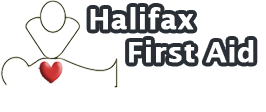Almost all of us will experience being in a critical situation at one time or another. We might witness an accident, a friend might get a cut that won’t stop bleeding or a natural disaster might require us to do our part to help save someone. This means that it’s imperative that we know what to do in these situations. Knowing how to administer first aid or CPR the right way is an important skill and can mean the difference between someone developing a permanent disability or someone dying. Even if you haven’t received any training, there are certain things you can do.
• Try to wake the victim. If the victim is not breathing or having difficulty breathing, call 911 immediately. It’s important not to leave the victim alone. If there’s someone with you, have that person go for help. If you’re alone, keep shouting for help until someone hears you and responds.
• Start doing chest compressions. The old way of doing CPR was to check the airways first. But new studies have found that it’s crucial to start doing chest compressions immediately to help start blood circulation. If the person isn’t breathing, place the heel of your hand in the middle of the chest, at the area between the nipples. Interlock your hands and push straight down to the chest. Use your body for leverage and push down around 30 times. Chest should depress about 2 inches and compressions should be done one every second.
• Begin mouth to mouth breathing. If you have taken first aid and CPR courses, then do mouth to mouth after 30 compressions. Clear the person’s airways by using the head-tilt, chin-lift method. Pinch the victim’s nose and place your mouth over the victim’s and give two quick breaths. Make sure the breath was big enough that the victim’s chest rises. If the chest doesn’t rise, check the airways again, reposition the head and try once more. After the chest falls back, repeat the procedure. Only do mouth to mouth if you have training. If you’re not confident enough to do this step, just keep doing the chest compressions.
If there’s an automated external defibrillator (AED), keep doing the manual CPR until the AED can be attached to and used on the victim.
After two minutes of CPR, stop the chest compressions and check if the victim has started breathing. Continue with the CPR and chest compressions if the victim is still unresponsive or is still not breathing. Check every two minutes until the medics arrive or the victim wakes up.
While reading about first aid and CPR courses will give you some ideas on what to do during an emergency, nothing beats having real CPR training. There are a number of institutions that offer first aid and CPR courses to anyone. However, not all CPR classes are the same; some are geared more for health care professionals while others focus on ordinary people. Just make sure to choose the right class for you and that you sincerely commit yourself and your time to learning about this lifesaving skill.
